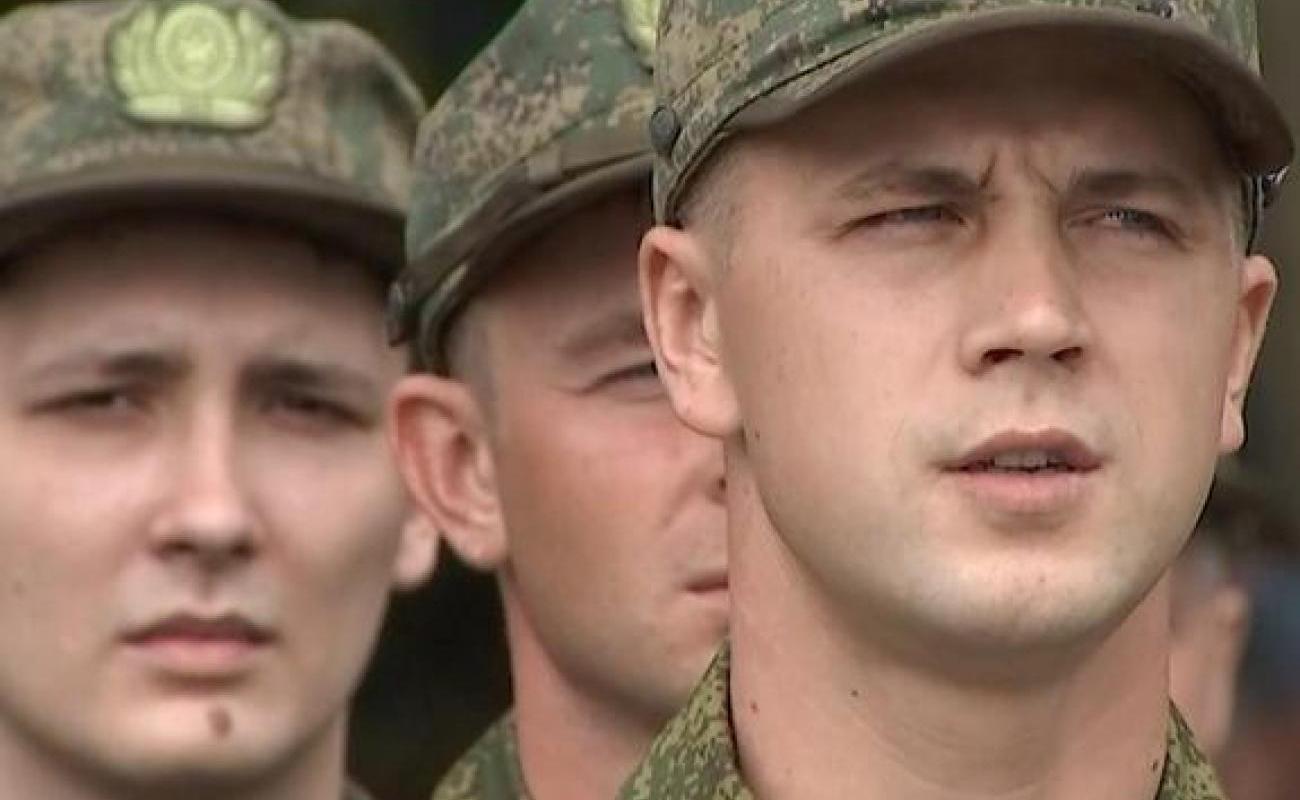Are Russia's plans to reform its army realistic?

Russia recently announced its intention to increase its armed forces by another 350,000 soldiers to a total of 1.5 million personnel. In justification of this move, Defense Minister Sergei Shoigu said the "military security of the nation," as well as of the "new subjects" — as he called the illegally annexed Ukrainian territories — and the country's "critical infrastructure" could only be secured "if the most crucial components of the armed forces are reinforced."
According to Shoigu, the reform will begin this year and conclude in 2026. Its aim is threefold: to restore the former military districts of Moscow and Leningrad (today's St. Petersburg), create new troop formations in the illegally occupied zones in Ukraine, and establish 12 new mobile units.
New army corps on Finland's border
A new corps is also planned for the region of Karelia, north of St. Petersburg. It is set to include three motorized rifle divisions as ground forces, and two divisions of airborne troops.
"The corps in Karelia is a response to NATO's expansion," said Israeli military expert David Sharp, who is from Ukraine. The Russian region of Karelia borders Finland, which has requested NATO membership along with Sweden.
Sharp said Russia's war in Ukraine has demonstrated that Russian armed forces are not capable of fulfilling their mission of occupying Ukraine. In addition to beefing up its army, Moscow also wants to reorganize its troops.
"The reform is meant to to speed up the transition from brigades to divisions, which would give the units more autonomy. The changes are directed more toward long-term goals, rather than to correcting the current situation on the front [in Ukraine]," he said.
How will the new soldiers be recruited?
The most important point of the announced reform — the increase of the army by 350,000 troops — has raised questions among observers. Where will these new fighters be recruited?
In Russia, all men between the ages of 18 and 27 are currently subject to military service. Each year, some 270,000 recruits are drafted in the spring and fall for one year. But this is only a portion of the entire age cohort, as many men have been able to avoid conscription, for example, by studying at a university or bribing authorities.
Now, however, the age of compulsory military service is to be raised from 21 to 30 years of age. "This is part of the reform. Eighteen-year-old recruits are still just ‘children' and hardly fit for battle. But 27-to-30-year-olds are physically stronger and have already completed their education, and that can benefit the army," said Sharp. He believes that in the future, far more conscripts will be called to duty.
The first step, however, will be to raise the upper limit to the age of 30 this spring. The minimum age requirement is to be raised at a later date, which so far has not been specified. That is said to expand the pool of conscripts by about 2 million men.
Is another mobilization looming?
Meanwhile, speculation about another troop mobilization has not abated. The Kremlin recently confirmed that the presidential decree from last September ordering a partial mobilization amid ongoing fighting in Ukraine was still in effect.
"If we look at the course of this war, then this announced reform can only be made possible with an additional mobilization. In order to increase the army to 1.5 million soldiers, hundreds of thousands of men will need to be called up. The number of soldiers is the only trump card Russia has left," said Sharp.
However, Andriy Ryzhenko, former deputy chief of staff of the Ukrainian Navy, is convinced Russia has nothing to gain from a further mobilization. He believes the army is still too occupied dealing with the new recruits from the first mobilization.
"New recruits will only sit around with nothing to do," he said, adding that the Kremlin had so far been unsuccessful in making up the losses it had sustained with new recruits.
Ryzhenko does not expect the new reform to bring about any substantial change in the matter. "Russia has suffered very heavy losses since the beginning of the war, and it needs to make up for that. But the new soldiers are not expected at the front until before next winter," he said.
How will the new reform be financed?
The planned personnel increase will be the second of its kind since Russia went to war against Ukraine last February. In August, President Vladimir Putin raised the maximum contingent by 140,000 men. Together with the additional 350,000 troops announced this week, this would amount to almost half a million new soldiers who will have to be equipped with weapons and uniforms — an enormous burden on the state budget.
Given the decline in Moscow's oil and gas revenues due to international sanctions, can the Kremlin even afford this increase? "This reform requires many resources, not just money and personnel. It requires equipment and infrastructure for the 350,000 conscripts. In addition, specialists are needed to train new recruits," said Sharp.
He suspects that many newly formed units will formally exist in name only, or will not receive military equipment. "A significant part of the promises made by this reform appear unrealistic," he added.
According to Ryzhenko, it costs about $80,000 (€73,600) to fully equip a soldier. Given these high costs and the shrinking state earnings, he, too, is doubtful that the announced reform can be implemented. He also pointed out that Russia depends on foreign components for its military equipment.
On top of all this, Ryzhenko believes such a measure would be quite unpopular with the public. "At the end of the day, many Russians are reluctant to go to war," he said.
